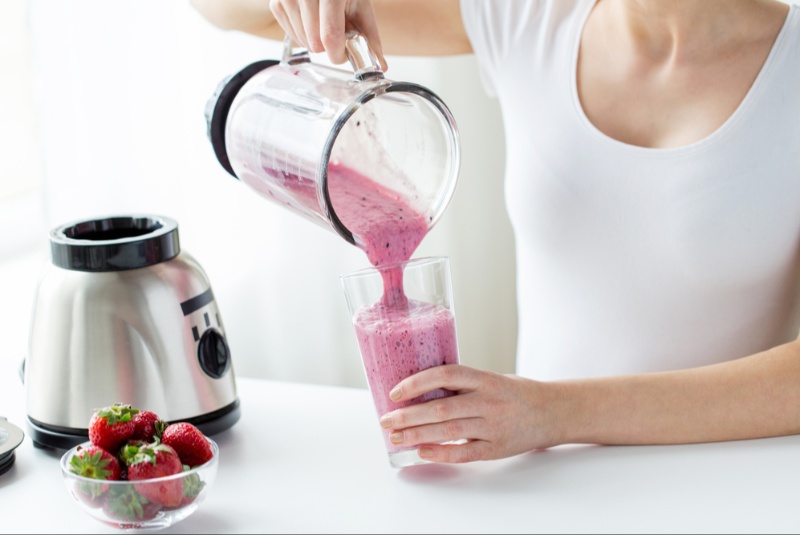Embarking on a journey to a healthier lifestyle often involves the incorporation of nutritious smoothies into one's diet. This guide delves into the world of blenders, exploring the key features, considerations, and smart tips for selecting the right blender to elevate your smoothie game.
1. Understanding Blender Types: Exploring the Options
Countertop Blenders for Versatility
Opt for countertop blenders for versatility. These powerful blenders are designed for various tasks, including smoothie making. They come with multiple speed settings, blending presets, and often feature strong blades suitable for crushing ice and frozen fruits.
Personal Blenders for On-the-Go Convenience
Consider personal blenders for on-the-go convenience. If you prefer blending and drinking from the same container, personal blenders with detachable travel cups are an excellent choice. They are compact, easy to use, and simplify the process of blending and enjoying your smoothie without transferring it to another cup.
Immersion Blenders for Compact Spaces
Explore immersion blenders for compact spaces. Also known as stick blenders, these handheld devices are ideal for those with limited kitchen space. While they may not offer the same power as countertop blenders, immersion blenders are efficient for blending smaller quantities and are easy to store.
2. Power and Performance: Finding the Right Motor Strength
Optimal Wattage for Efficient Blending
Choose optimal wattage for efficient blending. The power of a blender is often measured in watts, and a higher wattage generally indicates a more powerful motor. For smoothie making, look for a blender with at least 500 watts to ensure it can handle blending frozen fruits, ice, and leafy greens effortlessly.
Consider High-Performance Blenders for Smooth Textures
Consider high-performance blenders for smooth textures. Blenders with higher wattages, typically above 1000 watts, are classified as high-performance blenders. These are designed to handle tough ingredients, resulting in smoother textures and the ability to create a wider range of recipes beyond smoothies.
Variable Speed Settings for Precision
Prioritize variable speed settings for precision. Blenders with multiple speed options allow you to control the blending process more precisely. This is particularly beneficial when working with different ingredients that may require varying levels of blending.
3. Blades Matter: Evaluating Blade Design and Material
Stainless Steel Blades for Durability
Look for stainless steel blades for durability. Stainless steel is a popular choice for blender blades due to its corrosion resistance and strength. High-quality, sharp blades ensure efficient blending and the ability to crush ice and frozen ingredients effectively.
Multilevel Blades for Consistent Blending
Consider blenders with multilevel blades for consistent blending. Blades with multiple levels and varying angles enhance the blending efficiency by pulling ingredients down towards the blades, resulting in smoother and more uniform textures.
Detachable Blades for Easy Cleaning
Prioritize blenders with detachable blades for easy cleaning. The ability to remove the blades makes cleaning the blender more convenient, as it allows thorough access to all components. Some blenders even have blade assemblies that are dishwasher safe.

4. Capacity and Size: Matching Blender Size to Your Needs
Consider Jar Capacity Based on Serving Size
Choose jar capacity based on serving size. Blenders come with jars of various sizes, ranging from single-serving cups to larger pitchers. Consider your typical serving size and whether you'll be preparing smoothies for one person or the whole family when selecting the blender jar capacity.
Compact Size for Limited Kitchen Space
Opt for a compact size for limited kitchen space. If you have a small kitchen or limited storage, consider a blender with a compact design. Personal blenders or immersion blenders are excellent choices for those with space constraints.
Large Capacity for Batch Processing
Consider large capacity for batch processing. If you plan to prepare multiple smoothies at once or use the blender for other recipes, a larger-capacity blender may be more suitable. High-capacity blenders are also beneficial for blending larger quantities of ingredients for gatherings or events.
5. Additional Features: Enhancing the Blending Experience
Preset Programs for Convenience
Look for preset programs for convenience. Many modern blenders come with preset programs tailored for specific tasks, such as smoothies, soups, or ice crushing. These programs automate the blending process, making it easy for users to achieve consistent results.
Tamper for Thick and Frozen Mixtures
Consider a tamper for thick and frozen mixtures. Some high-performance blenders include a tamper, a tool that allows you to push ingredients towards the blades, ensuring thorough blending, especially for thick and frozen mixtures.
Noise Level for a Quiet Blending Experience
Evaluate noise level for a quiet blending experience. High-powered blenders can be noisy, so if noise is a concern, look for models designed with sound enclosures or those specifically marketed as quieter blenders.
6. Budget Considerations: Balancing Features and Cost
Establish a Realistic Budget
Establish a realistic budget. Blenders come in a wide price range, and determining your budget beforehand will help narrow down options. Consider the features that matter most to you and find a blender that strikes the right balance between performance and cost.
Value for Money: Features vs. Cost
Seek value for money by assessing features versus cost. While it's tempting to opt for the latest and most feature-rich blender, it's essential to assess whether the additional features align with your needs and justify the increased cost.
Warranty Coverage for Long-Term Assurance
Check warranty coverage for long-term assurance. A blender with a comprehensive warranty provides peace of mind and assurance of the manufacturer's confidence in the product. Consider the length and terms of the warranty when making your final decision.
Blending Your Way to Nutritional Success
Choosing the right blender for smoothies involves a thoughtful consideration of your lifestyle, preferences, and budget. Whether you opt for a countertop blender with high wattage for versatility, a personal blender for on-the-go convenience, or an immersion blender for compact spaces, finding the perfect match requires balancing features and cost. By understanding the importance of power, blade design, jar capacity, additional features, and budget considerations, you can embark on a journey to blending brilliance and elevate your nutritional intake with delicious and nutritious smoothies.




